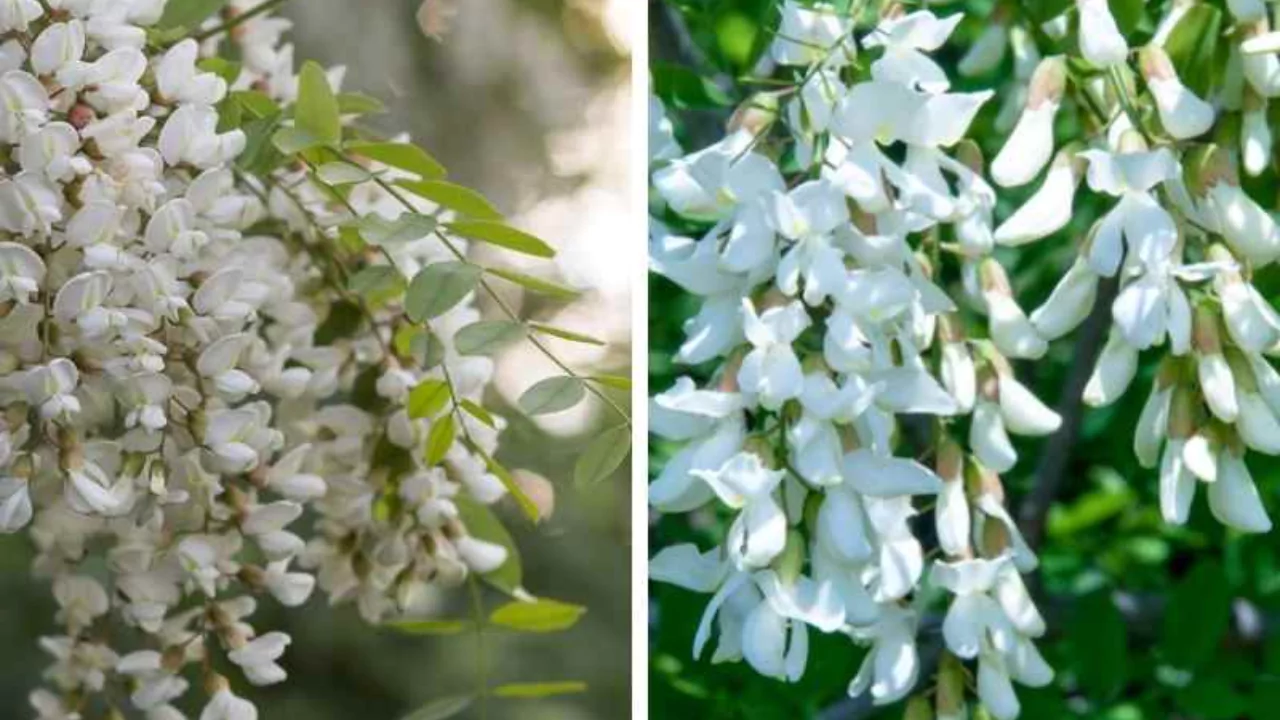Some characteristics of honey locust trees are an excellent match for black locust trees, and hence the name. Nonetheless, as different species of locusts, these two varieties of trees also possess a good number of traits that are not common between them.

How Do I Tell Honey Locust From Black Locust Trees?
At times, spelling constrict the boundless possibilities of creativity. Luckily, spelling is not an issue when it comes to black locust trees and honey locust trees since their names can be easily spelled. Here is what to note when trying to differentiate the two species of trees.
- Bark and Thorns: The black locust tree’s bark is dark in color. It has a pattern that appears like intertwined ropes. The bark of the Honey Locust tree can be dark brown or dark gray.
- Flowers: Black locust trees have white flowers to allow for easier identification. The flowers grow in clusters measuring four to eight inches long. Purple Robe Black Locust, a variety of black locust tree, possesses blush purple flowers. Both varieties of trees bloom at the same time.
- Leaves: Both the black locust and honey locust trees possess long compound leaves with a central stem. The leaves on black locust trees, however, are simple compound leaves. Honey locust trees have contrasting bipinnate compound leaves.
The black locust tree and honey locust tree differ in the season they sprout new leaves with honey locust emerging earlier in the season. Additionally, trees can be identified by their leaves.
- Seed Pods: Both these trees have smooth, shiny, and thin seed pods but differ in size. Mature black locust seed pods range from 2 to 4 inches, while those of honey locust seed pods can reach lengths of 12 to 14 inches.
- Shape: Black locust tree’s trunk is straight with branches and stems growing off the trunk in zig-zag formation. Main trunk of honey locust trees has a short or arched shape, and branches and stems off it also grow in a zig-zag manner like black locust tree.
Honey Locust Versus Black Locust Trees: Similarities
- The black and honey locust trees both are indigenous to certain areas within the United States of America. Honey and black locust trees are present throughout North America, except the states of Oregon and Washington, where only black locust trees can be found.
- Both black locust and honey locust trees fall under the category of locust trees that are derived from the Fabaceae family (the family of peas).
- Both types of locust trees will bloom from the middle to late spring.
- Honey and black locusts can occur as trees or shrubs.
- The black locust tree and the honey locust tree are cultivable from USDA Hardiness Zone 3 to zone 8. They require full sunlight in order to grow optimally.
- Both black locust tree and honey locust tree are cultivable on black walnut tree. Therefore, both species are resistant to deer due to their thorns.
Honey Locust Versus Black Locust Trees: Differences
- Black locust trees’ scientific or botanical name is Robinia pseudoacacia while the honey locust trees is Gleditsia triacanthos. The black locust tree also has the common names of false acacia tree or yellow locust tree.
- Black locust trees spread all over the place in the wild and can reach astounding heights of 80 feet, but most mature specimens ‘top out’ at 50 feet: honey locusts are a large species of tree that can grow to 100 feet tall, easily towering over black locust trees which reach about 60 feet at maturity.
- Compared to honey locust trees, black locust trees can withstand a greater variety of soils. A black locust will happily flourish in drought, clay soil, poorsilt, as well as in salt-containing soil or alongside a river, as long as the soil is well-drained.
- Located within the Midwestern region of the United States, black locusts are regarded as an invasive species due totheir ability to vigorous growth, reproduce rapidly by root suckering, and self-seeding. Due to this invasive tendency, it is advised that black locusts should not be introduced in many other places.
As the reasoning and logic behind the names suggests, the two species do share remarkable similarities, yet there are many differences that aid in the identification of black locust and honey locust trees.